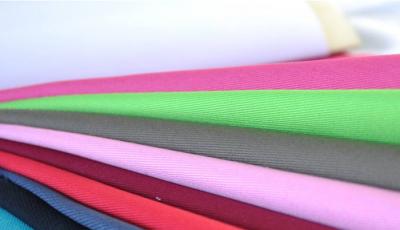Softener can be absorbed on and smooth the surface of the fibers to change the feel and make the product more comfortable. Among the various auxiliaries for textiles, the variety and dosage of softeners rank first. Silicone fabric softeners are one kind with superior performance, outstanding effects and wide applications. This kind of softener is an emulsion or microemulsion of polysiloxane and its derivatives, which not only makes the fabric have a good soft and smooth feel, but also gives the nonwoven surface gloss, wear resistance, elasticity, anti-fouling and anti-wrinkle. The slippery style of non-woven fabrics is also increased. What's more, this kind of material is non-toxic and does not pollute the environment with low cost. Thus, it has been widely used in various industries.
1. Classification and performance characteristics of silicone fabric softener
Silicone fabric softener products have been developed so far. According to the chemical reactivity and fiber reactivity of the active ingredient polysiloxane silicone emulsion, it can be divided into three categories, inactive group, active group and reactive modification group.
(1) Inactive silicon softener
Such softeners are mainly dimethyl silicone oil, called polydimethylsiloxane (DMPS), or methyl silicone oil for short. It can give fabrics better softness and heat resistance. Its emulsion products include Dow Corning 36 and 37. Because of its low degree of polymerization, it cannot cross-link itself, and will not react to fibers. The finished fabric has unsatisfactory feel, fastness and elasticity. Therefore, it cannot be used directly as a softener and must be prepared under the action of an emulsifier. However, it can be applied to fabrics after it becomes silicone oil emulsion to increase washing resistance.
(2) Active silicone softener
This kind of softener mainly replaces the two ends of the linear structure of dimethyl polysiloxane (DMPS) with hydroxyl (-OH) or caps the head with hydroxyl to make it have a certain degree of hydrophilicity. The emulsion made of this hydroxyl-terminated dimethyl polysiloxane is the so-called silicone hydroxy emulsion. There are many types of these products, which can be used as a softener alone, or can be combined with other silicones to cross-link to form a water-insoluble molecular film on the fiber, so the finished fabric is waterproof and washable effect. This type of softener is the second-generation silicone softener. According to the different surfactants used in the preparation, it can be divided into several types, cationic, anionic, non-ionic and composite ion, which can be selected by the fabric types.
(3) Modified silicone softener
This kind of softener introduces other active groups on the molecular chain of organic silicon to make it have special functions to meet the needs of high-end finishing of various fabrics, improve the antistatic, oil stain and hydrophilic properties of the fabric, and make the chemical fiber fabric have many advantages of natural fabrics. Thus, it has become the third-generation silicone softening finishing agent with special functions.
2. Development and suggestions of silicone fabric softener
(1) The research and development of China's silicone fabric softeners has made great progress. However, the types of products are relatively small and low-grade compared with foreign countries. Because some high-end products can only be bought by import, it is necessary to increase the research, development and application of organosilicone finishing agent, so as to improve the competitiveness of domestic textile products.
(2) To improve the quality and multi-functionality of products to meet the needs of the market, the production and modification technology of organosilicon monomers should be improved while the emulsification and microemulsification technology should be continued to research and develop.
(3) To compound softeners or surfactants with different properties, the new varieties made by synergistic effect have better performance than single components, and can obtain softener products with better performance and more functions.
(4) As the requirements for ecological textiles and environmental protection have increased for both domestic and foreign markets, it is necessary to develop softener products that are formaldehyde-free and have good biodegradability. The functional group of another softener is introduced into the original softener structure to obtain a new type of softener with high performance.



 English
English  日本語
日本語  Español
Español  tiếng việt
tiếng việt  Türkçe
Türkçe  ไทย
ไทย  українська
українська  हिंदी
हिंदी  বাঙালি
বাঙালি  اردو
اردو 

